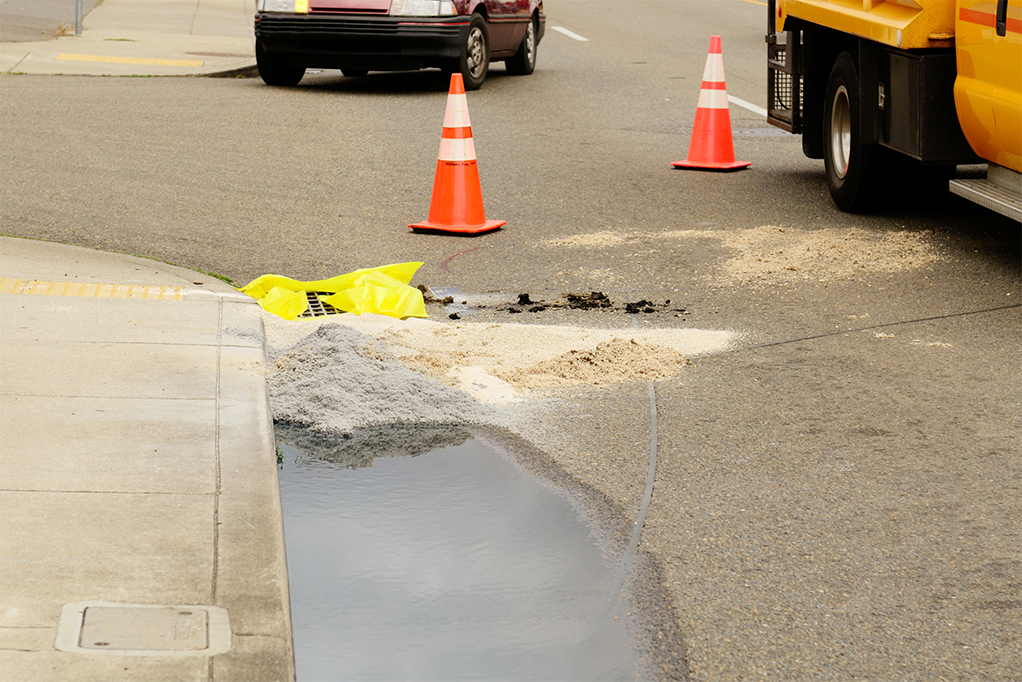Changes in Cloud-Based SWPPPs and EPA Permit Requirements Stormwater pollution prevention plans (SWPPPs) are an integral component for stormwater management methods including managing runoff from construction sites to prevent pollution of water sources. SWPPPs are typically required for construction projects and industrial facilities exposed to stormwater runoff in the United States under the Clean Water […]
Tag: SWPPP
When Is a Stormwater Pollution Prevention Plan Required? In a world where environmental responsibility is becoming an ever-greater priority, understanding the ins and outs of Stormwater Pollution Prevention Plans (SWPPP) is crucial. But when exactly is a SWPPP required? Before we delve into that, let’s discuss the significance of stormwater pollution prevention and why you
When Is a Stormwater Pollution Prevention Plan Required? | ComplianceGORead More »
CA Construction General Permit & Stormwater Plan Essentials Navigating the California Construction General Permit and SWPPP Compliance With ComplianceGo The California Construction General Permit, also known as the California CGP, is a key regulatory requirement for construction sites that displace soil or involve land clearing. Understanding the intricacies of the permit, its compliance requirements, and
CA Construction General Permit & Stormwater Plan Essentials | ComplianceGORead More »
The Comprehensive SWPPP Guide for Construction and Industrial Sites Managing stormwater is a critical aspect of environmental protection and regulatory compliance for construction and industrial sites. One of the core tools in this effort is the Stormwater Pollution Prevention Plan (SWPPP). This guide will introduce you to SWPPPs, their importance, and how to develop and
The Comprehensive SWPPP Guide for Construction and Industrial Sites | ComplianceGORead More »
How to be SWPPP Compliant with On-Site Storage Fertilizers Where fertilization is necessary, always follow these restrictions: Apply the fertilizer according to the manufacturer’s specifications.Apply at the appropriate time of the year.Avoid fertilizer use prior to heavy rain.Never apply fertilizer to frozen ground.Never apply to conveyance channels with flowing water.Be sure to sweep off sidewalks
How to be SWPPP Compliant with On-Site Storage | ComplianceGORead More »
How to Handle Dangerous Substances on Site Oils, Vehicle Maintenance, and Fluids When the construction site has fuels, oils, and vehicle maintenance fluids on site, there are specific stormwater BMPs and SWPPP regulations that should be followed: Ensure BMP specifications are included in the StormWater Pollution Prevention Plan, or SWPPP, for oil and fuel storage
How to Handle Dangerous Substances on Site | ComplianceGORead More »
Improper Chemical Handling Can Lead to Environmental Damage Environmental damage is completely avoidable with the right planning and tools. We will discuss chemical treatments as a needed erosion control BMP and what resources to consult when using them. Chemical Treatments Treatment chemicals should only be used if conventional BMPs are ineffective to protect against erosion.
Improper Chemical Handling Can Lead to Environmental Damage | ComplianceGORead More »
Why It’s So Important to Pick Up Your Trash Waste Management Managing waste products is a concern on any site. Waste products can cause significant pollution if they escape into a water body. Any receptacles you use need to protect waste from both water and wind to prevent them from escaping. This is often done
Why It’s So Important to Pick Up Your Trash | ComplianceGORead More »
How to Handle Toxic Substances Commonly Found on Construction Sites Concrete, Paint, and Stucco Concrete, Paint, and Stucco, if introduced into a waterbody, can cause serious issues with a waterbody. Some of the impacts include: Increased turbidityIncreased toxicityHigh (alkaline) pH levelsReduced oxygen levels If these materials are washed onto the soil, these impacts can still
How to Handle Toxic Substances Commonly Found on Construction Sites | ComplianceGORead More »
Why Inlet Protection Can’t be the First Line of Defense Storm Drain Inlet Protection According to just about every permit there is, storm drains must be protected. Most permits require a combination of sediment and erosion controls to prevent sediment and pollutants from reaching storm drains. The idea is that storm drain inlet protection is
Why Inlet Protection Can’t be the First Line of Defense | ComplianceGORead More »










